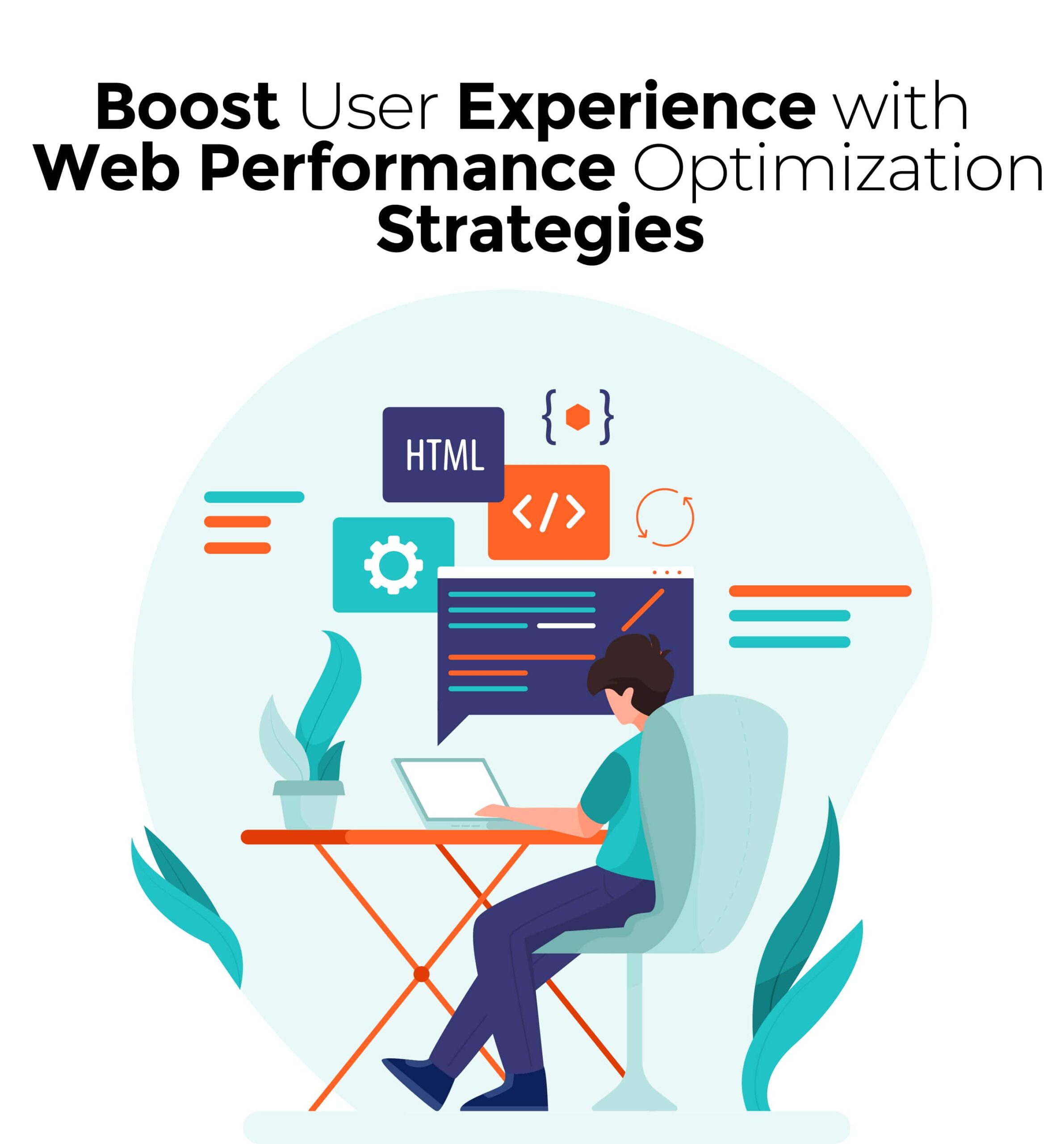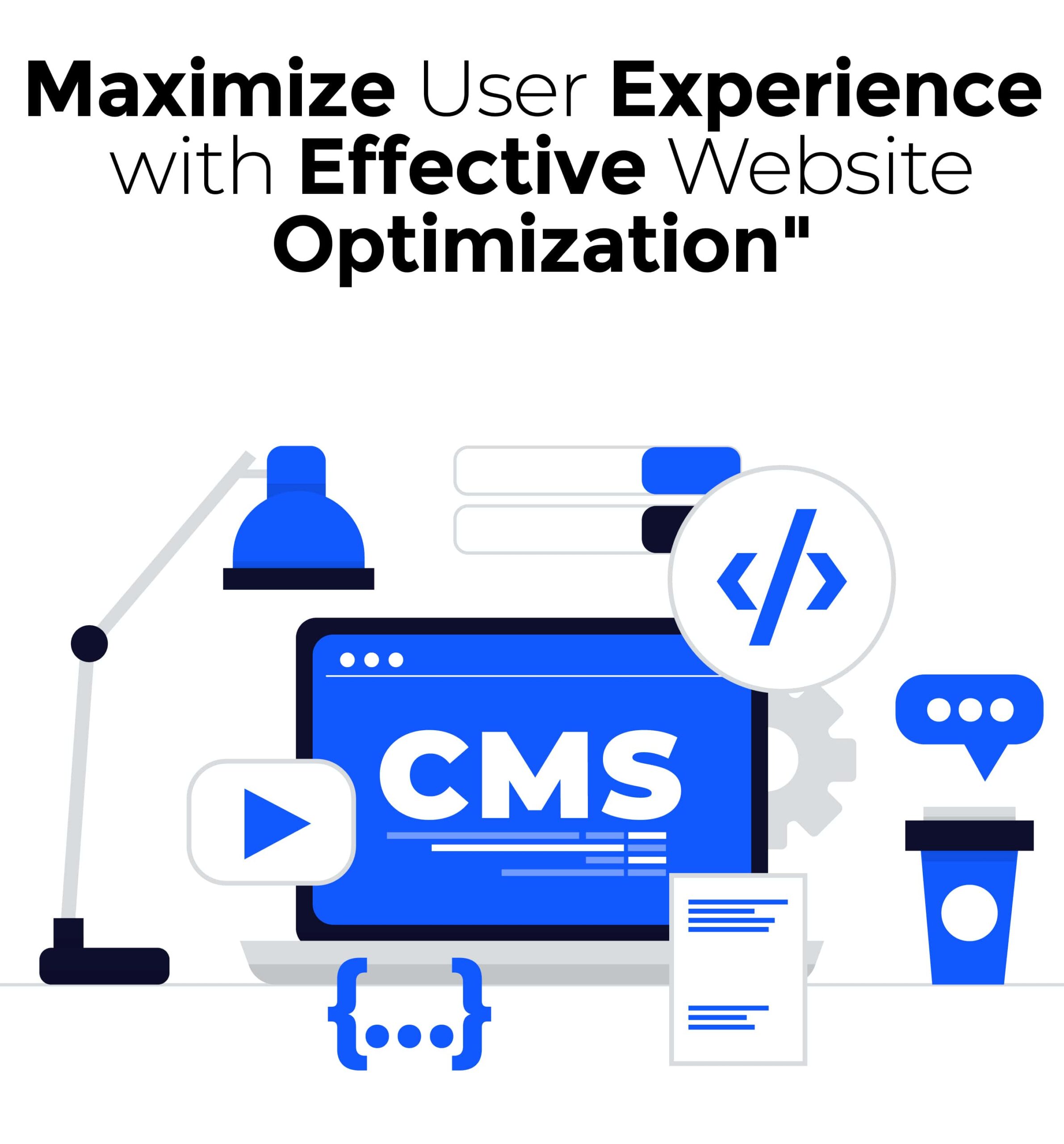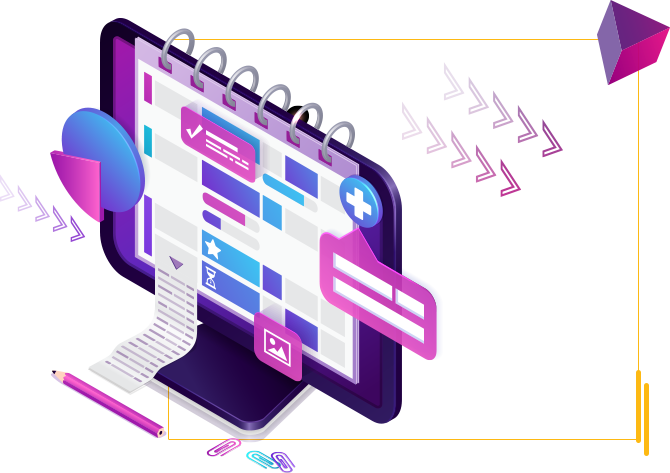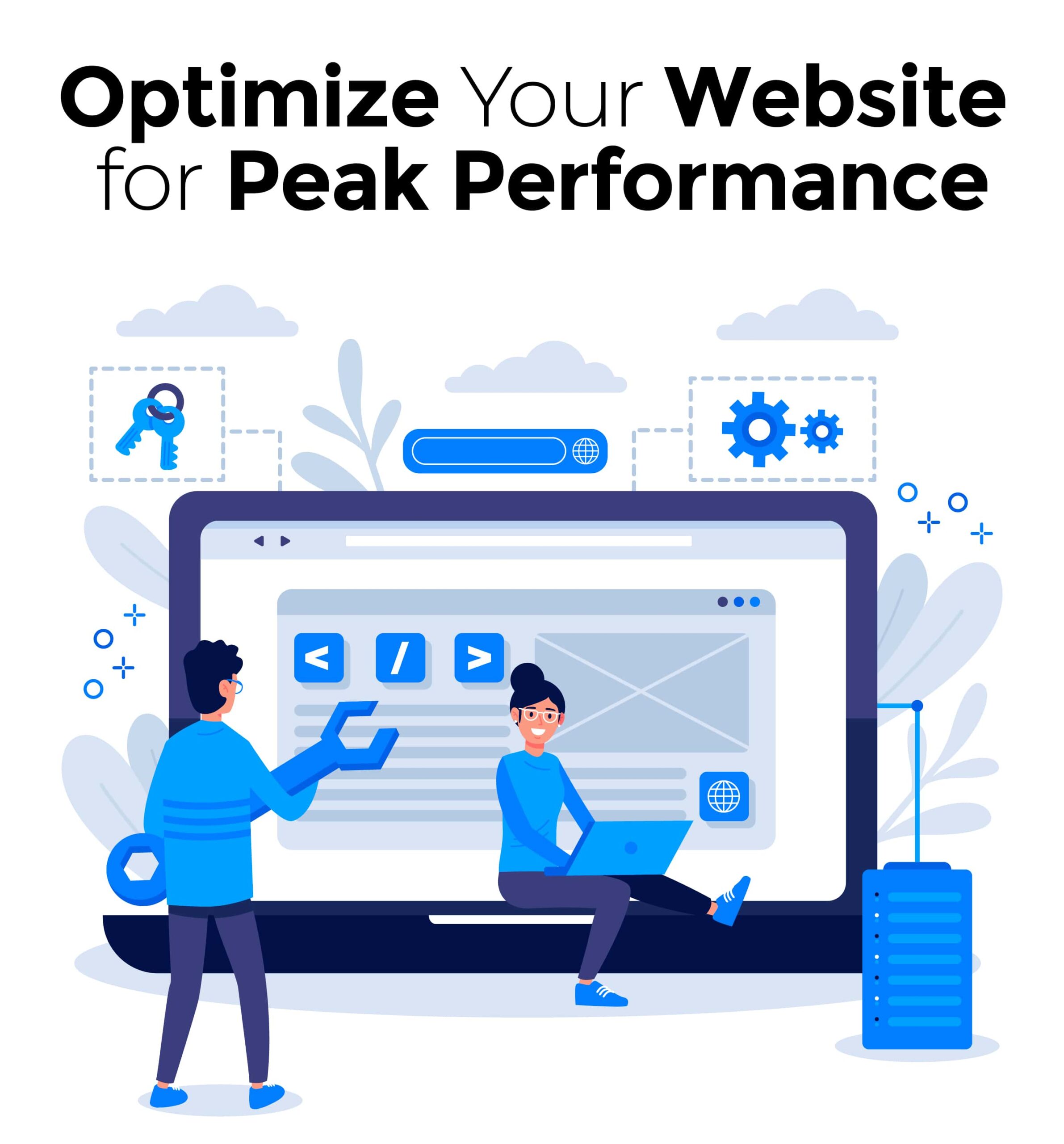
Web Performance Optimization: Techniques to Speed Up Your Website


Website performance helps create the first good impression visitors have of your business. Recognizing that there are no second chances regarding user experience is important. Slowloading websites are highly frustrating and can quickly discourage users from engaging with your content.
On the other hand, high-performance websites yield numerous benefits, such as increased return visits, reduced bounce rates, improved conversions, higher rankings in organic search results, and enhanced user experience.
Conversely, slow websites can result in financial losses and damage your reputation. By optimizing your website’s page load time, you can make a positive impact on your marketing and sales processes. This optimization can drive higher traffic, attract more qualified leads, and ultimately convert them into loyal customers.
This article will provide valuable recommendations on enhancing your website’s performance and reducing page load time. By implementing these techniques, you can ensure a smoother and faster experience for your users, thereby maximizing the potential of your online presence.
Who Are We?
We cater to all your business needs from digital
marketing to website development!

Why Web Performance Optimization Matters
When it comes to website development, the design and development of a website go hand in hand with its performance.
Imagine this: you stumble upon a beautifully designed website that promises an exceptional user experience. The visuals are eye-catching, and the content seems promising. But there’s a catch it takes ages to load. As seconds become eternities, frustration sets in, and you contemplate whether to wait or abandon ship.
This scenario highlights the crucial role that web performance optimization plays in engaging your audience. It’s like a finely choreographed dance between design and swift functionality. A visually stunning website is merely a facade if it fails to deliver content swiftly and efficiently.

Web development is an art that combines aesthetics with technical prowess. It’s about creating an immersive digital experience that captivates visitors from the moment they land on your page. However, even the most exquisite design can fall flat if it’s burdened by sluggish loading times.
Here’s where web performance optimization steps in as the story’s hero.
You can unlock the true potential of your web development efforts by optimizing various aspects of your website, such as file sizes, caching mechanisms, and server response times. It ensures that your website looks great and performs like a well-oiled machine.
When your website loads quickly, it seamlessly engages users and immerses them in your content. It eliminates the frustration of waiting and allows visitors to focus on what matters most – your message, products, or services.
Grow Human-Centered
Businesses
Online
Web App Vault is a custom web design and business
website development company that enhances the visibility
and credibility of businesses. We are an approachable
eCommerce service provider that fuels digital marketing.
We Are Here To Help
A swift and responsive website builds trust, enhances user experience, and keeps visitors returning for more.
In a nutshell, web performance optimization is the secret ingredient that elevates your website from visually appealing to a powerhouse of engagement.
It ensures that your website delivers on its promises, captivating visitors with its design and development prowess. Investing in optimization techniques lays the foundation for success in the digital realm, securing your audience’s attention, loyalty, and satisfaction.
Web App Vault – Your
Industry-Specific
Data Guardian
Our industry-specific web application solution
provides robust data security and a seamless user
experience tailored to your industry’s requirements.
Safeguard your sensitive data with assurance.

Providing Animation Services To
Clients In Multiple Cities Across USA & Canada
- Arlington
- Cleveland
- Jacksonville
- Miami
- Orlando
- Atlanta
- Dallas
- Louisville
- Minneapolis
- Philadelphia
- Austin
- Denver
- Kansas City
- New York
- Portland
- Chicago
- Houston
- Los Angeles
- New Orleans
- San Diego
Techniques For Optimizing Website Performance:
When it comes to website development, the design and development of a website go hand in hand in creating a remarkable online presence.
The world of web development is a vast landscape, encompassing both back-end and frontend web development. To ensure that your website truly shines, web development services often focus on optimizing its performance.
Let’s explore some key techniques that can enhance the speed and efficiency of your website, captivating visitors and keeping them engaged.

Minimizing HTTP Requests
One of the fundamental aspects of web development is minimizing the number of HTTP requests your website makes.
Each element on a web page, be it an image, a script, or a stylesheet, requires a separate request to the server. By reducing the number of these requests, you can significantly improve your website’s loading time.
A web developer skilled in website optimization will combine, concatenate, or minify these elements to minimize HTTP requests, ensuring a faster and smoother user experience.
Enabling Compression
Another effective technique in web performance optimization is enabling compression. Compressed files before being sent to the browser take up less space and can be transmitted more quickly. Gzip compression, for example, reduces the size of CSS, JavaScript, and HTML files without sacrificing functionality.
By enabling compression, you can drastically reduce the amount of data that needs to be transferred, resulting in faster page loading times.
Optimizing Images
Visual content plays a vital role in website design and development. However, highappropriately optimization significantly impacts a website’s performance if not optimized properly. Web developers employ various image optimization techniques, such as resizing, compressing, and using the appropriate file formats (like JPEG or PNG), to strike the perfect balance between visual quality and file size.
By optimizing images, you can ensure fast-loading pages without compromising on visual appeal.
Caching Content
Caching is a technique that stores some aspects of a website in a visitor’s browser or server. By caching static content like images, CSS files, and JavaScript, subsequent visits to your website become faster as the browser doesn’t need to request these resources again.
Web developers utilize caching mechanisms and leverage tools like Content Delivery Networks (CDNs) to ensure that content is readily available, reducing load times and enhancing overall performance.
Reducing Server Response Time
Backend web development is crucial in optimizing website performance, particularly in reducing server response time.
The server response time is the duration it takes a server to process a request and send a response. Skilled web developers fine-tune server configurations, optimize database queries, and leverage caching to minimize this response time.
You can create a more efficient and responsive web experience by reducing server response time.
Tools For Measuring Website Performance:
Measuring and analyzing website performance is essential for identifying areas of improvement and ensuring optimal user experience.
Fortunately, there are several reliable tools available that can provide valuable insights into the speed and efficiency of your website. Let’s explore three popular tools that web developers often utilize for measuring website performance:
Google Pagespeed Insights
Google PageSpeed Insights is a widely used tool that assesses the performance of your website across different devices and provides valuable suggestions for optimization.
Simply entering your website’s URL, PageSpeed Insights analyzes various performance metrics, including page load time, mobile-friendliness, and optimization opportunities. It provides a total performance score and detailed recommendations for enhancing your website’s speed and user experience.
Gtmetrix
GTmetrix is another powerful tool that measures website performance by simulating real user experiences. With GTmetrix, you can analyze key metrics such as page load time, total page size, and the number of HTTP requests made.
It provides insights into how your website performs across different browsers and locations. Additionally, GTmetrix generates a detailed report highlighting areas where improvements can be made, enabling web developers to fine-tune their optimization efforts.
Pingdom Website Speed Test
The Pingdom Website Speed Test is a popular tool that helps assess the speed of your website by monitoring its performance from various global locations. By conducting tests from different servers, Pingdom provides valuable information on factors that impact the website speed, such as DNS resolution time, server response time, and content size.
Additionally, Pingdom offers a performance grade and highlights opportunities for optimization, empowering web developers to enhance their websites’ overall speed and efficiency.
Common Mistakes to Avoid in Website Optimization:
Website optimization is crucial for delivering a fast and seamless user experience. However, there are inevitable common mistakes that web developers should be aware of and avoid to ensure optimal performance.
Let’s explore three such errors and how to steer clear of them:
Not Optimizing Images Before Uploading Them
Images are essential for enhancing the visual appeal of a website. However, failing to optimize images before uploading them can significantly impact website performance. Uploading highresolution images with large file sizes can slow page load times, leading to a poor user experience.
To avoid this mistake, web developers should compress and resize images appropriately before uploading them. Utilizing image compression techniques, choosing the correct file formats, and optimizing image dimensions can significantly reduce file sizes without compromising visual quality, resulting in faster loading of web pages.
Not Leveraging Browser Caching
Browser caching is a technique that allows specific files from a website to be stored on a user’s device. By leveraging browser caching, subsequent visits to the website can be faster as the browser can retrieve specific files from the local cache instead of requesting them from the server again.
Failing to enable browser caching can lead to unnecessary server requests, slowing page load times. Web developers should implement proper cache expiration mechanisms to enable browser caching effectively, including setting appropriate cache expiration headers. This ensures repeat visitors experience faster load times and reduces the overall server load.
Using Too Many Plugins or Scripts
Plugins and scripts can enhance the functionality and interactivity of a website. However, using an excessive number of plugins or scripts can have a detrimental effect on website performance.
Each plugin or script adds extra code and potentially additional server requests, which can increase page load times. Web developers must carefully evaluate each plugin or script’s necessity and performance impact. Minimizing the use of unnecessary plugins and scripts and optimizing their implementation can help streamline website performance and prevent unnecessary bloat.
Hire A Website Developer
Website optimization is vital for delivering a seamless user experience and maximizing the potential of your online presence. By avoiding common mistakes such as not optimizing images, neglecting browser caching, and using excessive plugins or scripts, web developers can ensure that their websites perform at their best.
For professional web development services that prioritize optimization and provide tailored solutions, consider partnering with Web App Vault.
At Web App Vault, we are experts in web development and committed to delivering highquality results that can help your website achieve optimal performance, ensuring a seamless user experience.
